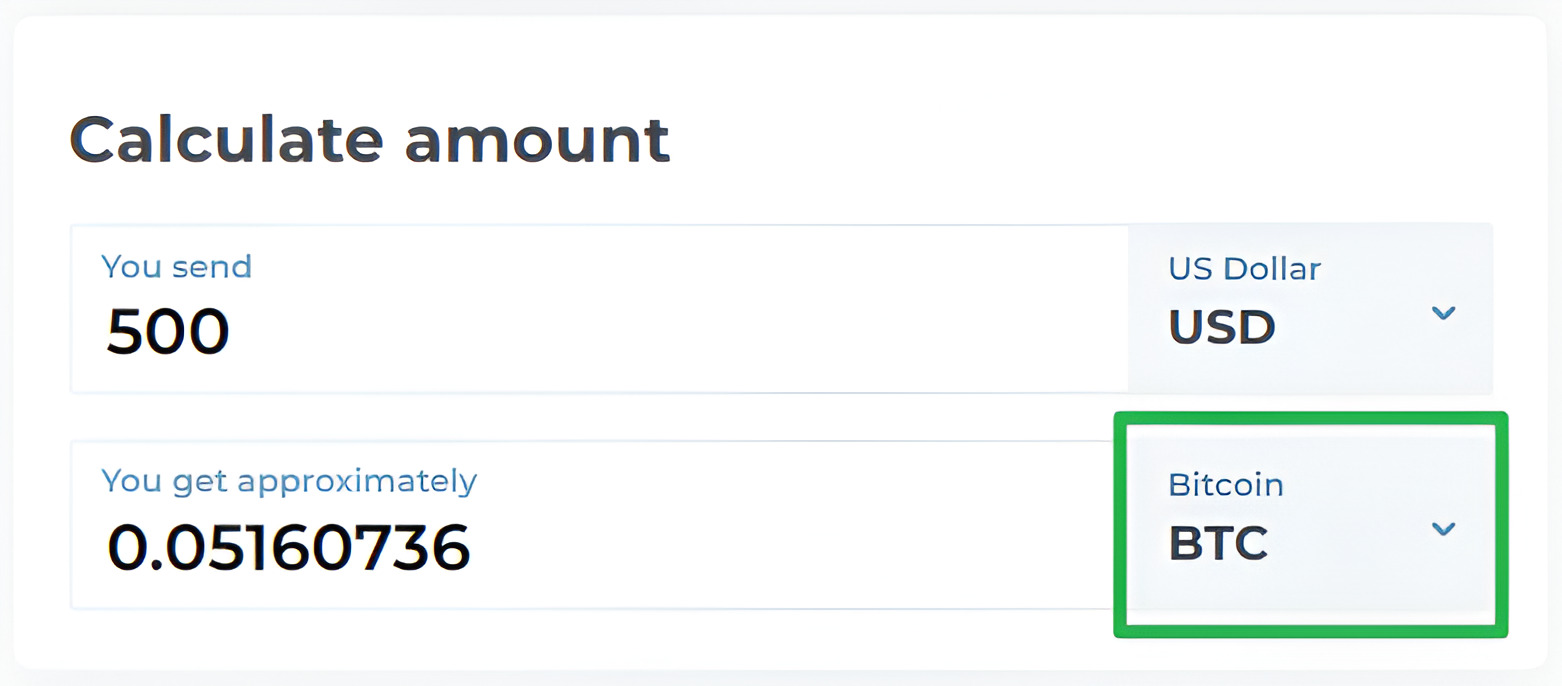Introduction
Bitcoin, the world’s first decentralized digital currency, has gained immense popularity since its inception in 2009. It allows users to conduct peer-to-peer transactions without the need for intermediaries, such as banks or governments. However, one of the biggest mysteries surrounding Bitcoin is the identity of its creator, known by the pseudonym Satoshi Nakamoto. The true identity of Nakamoto remains unknown, and many theories and speculations have emerged over the years.
The concept of Bitcoin was introduced in a whitepaper titled “Bitcoin: A Peer-to-Peer Electronic Cash System,” published by Satoshi Nakamoto in October 2008. In this revolutionary document, Nakamoto outlined the technical details and principles behind Bitcoin. The whitepaper described a decentralized network, powered by blockchain technology, which would enable secure and transparent transactions.
The origins of the Bitcoin project are shrouded in mystery. Satoshi Nakamoto’s identity remains undisclosed and various hypotheses have emerged about who he, she, or they may be. Some believe that Nakamoto is an individual, while others think it could be a collective pseudonym used by a group or organization. The anonymous nature of Nakamoto’s identity has fueled curiosity and speculation in the cryptocurrency community and beyond.
Satoshi Nakamoto’s Identity
The identity of Satoshi Nakamoto, the creator of Bitcoin, remains one of the greatest mysteries in the cryptocurrency world. Despite numerous investigations and speculations, no definitive proof of Nakamoto’s true identity has been uncovered. Nakamoto introduced Bitcoin in 2008, and then disappeared from public view in 2010, leaving behind a thriving digital currency ecosystem and a network of enthusiasts.
Theories and potential candidates for Nakamoto’s identity have emerged over the years, but none have been confirmed. Some believe that Nakamoto is a single individual operating under a pseudonym, while others argue that it could be a collective effort involving multiple individuals. The lack of concrete evidence has led to a wide range of speculation and debate within the cryptocurrency community.
One theory suggests that Nakamoto is a pseudonym used by a group of programmers or developers. This hypothesis is supported by the complexity and technical expertise displayed in the creation of Bitcoin. The level of cryptography and network design implemented in Bitcoin’s architecture suggests the involvement of a highly skilled team. However, without any concrete evidence, this theory remains purely speculative.
Another theory proposes that Nakamoto may be a well-known figure in the tech industry, such as a computer scientist or a cryptographic expert. Several names have been associated with the pseudonym, including Hal Finney, Nick Szabo, and Dorian Nakamoto, but no conclusive evidence has been presented.
Despite the lack of definitive information, the impact of Nakamoto’s creation cannot be denied. Bitcoin has revolutionized the financial industry and inspired the development of thousands of other cryptocurrencies. Whether Nakamoto’s true identity is ever revealed or not, their contribution to the world of digital currencies remains significant. The mystery surrounding Nakamoto continues to captivate the imagination of individuals interested in the decentralized revolution initiated by Bitcoin.
The Whitepaper
“The Bitcoin: A Peer-to-Peer Electronic Cash System” whitepaper, published by Satoshi Nakamoto in October 2008, is considered the foundation of the entire cryptocurrency ecosystem. In this nine-page document, Nakamoto outlined the principles and technical details behind Bitcoin, presenting a revolutionary concept that would disrupt traditional financial systems.
The whitepaper begins by introducing the problem of double-spending, wherein a digital currency can be spent more than once, leading to trust issues and the need for a central authority to prevent fraud. Nakamoto proposed a solution based on cryptographic proof and a decentralized network, known as the blockchain.
The blockchain is the underlying technology that powers Bitcoin. It is a public ledger that records all transactions in a chronological and transparent manner. Nakamoto described how the decentralized network of computers, known as nodes, collaboratively validate and verify transactions, eliminating the need for a trusted intermediary.
Key concepts outlined in the whitepaper include proof-of-work, which ensures the integrity of the blockchain by requiring participants to solve complex mathematical puzzles before adding a new block of transactions to the chain. Nakamoto also introduced the idea of mining, where participants provide computing power to secure the network and are rewarded with newly minted Bitcoin.
The whitepaper elaborates on the mechanisms for peer-to-peer transactions, detailing how users can send and receive Bitcoin without revealing their real identities. Nakamoto emphasized the importance of privacy and security, providing a level of anonymity while maintaining transparency within the system.
Nakamoto anticipated the challenges and skepticism surrounding Bitcoin at its early stages. The whitepaper addressed potential concerns such as scalability, network attacks, and incentives for participants. It laid the foundation for the further development of the cryptocurrency, addressing both technical and theoretical aspects of the project.
Since its publication, the Bitcoin whitepaper has not only influenced the development of numerous other cryptocurrencies but also sparked a global movement towards blockchain technology and decentralized finance. Its impact extends far beyond the realm of digital currencies, reaching industries such as banking, supply chain management, and voting systems.
In summary, the Bitcoin whitepaper presented a groundbreaking vision for a decentralized, peer-to-peer electronic cash system. It presented innovative concepts that have since reshaped the world of finance and technology, with the potential to revolutionize multiple industries in the future.
Bitcoin’s Origins
The origins of Bitcoin can be traced back to the global financial crisis of 2008. During this time, faith in traditional financial systems was eroding, and there was a growing demand for alternative forms of currency that were not controlled by central authorities. In response to these concerns, the mysterious figure known as Satoshi Nakamoto introduced Bitcoin to the world in 2009.
Bitcoin was created as a response to the need for a secure, transparent, and decentralized form of digital currency. Nakamoto’s vision was to develop a system that would allow individuals to conduct peer-to-peer transactions without the need for intermediaries such as banks or governments. By eliminating the middlemen, Nakamoto aimed to create a system that was resistant to censorship, fraud, and control by any single entity.
Bitcoin’s underlying technology, the blockchain, played a crucial role in its development. The blockchain acts as a public ledger that records all transactions in a transparent and immutable manner. This distributed ledger technology ensures the security and integrity of the Bitcoin network by preventing double-spending and providing a transparent record of all transactions.
In the early days of Bitcoin, mining played a vital role in its growth. Miners would provide computing power to solve complex mathematical puzzles, allowing them to validate and verify transactions on the network. In return, they would be rewarded with newly minted bitcoins, which acted as an incentive for participation and contributed to the security of the network.
Bitcoin’s origins were met with both enthusiasm and skepticism. As the first decentralized digital currency, its potential to disrupt traditional financial systems and empower individuals was revolutionary. However, there were also concerns about its stability, viability, and potential for illicit activities due to its relative anonymity.
Despite the initial doubts, Bitcoin gradually gained traction and started to attract attention from early adopters and enthusiasts. It facilitated the rise of a vibrant cryptocurrency ecosystem, fostering the development of alternative digital currencies and innovative blockchain-based projects.
Today, Bitcoin remains the most well-known and valuable cryptocurrency, with a thriving global market and a growing number of individuals and businesses accepting it as a form of payment. Its origins, rooted in the need for a decentralized and transparent financial system, have sparked a global movement towards blockchain technology and the exploration of new possibilities in the realm of digital finance.
The Search for Satoshi
Since Satoshi Nakamoto’s disappearance in 2010, there have been numerous attempts to uncover the true identity of the enigmatic creator of Bitcoin. The search for Satoshi has captivated the attention and curiosity of crypto enthusiasts, journalists, and investigators alike. However, despite the relentless pursuit, Nakamoto’s true identity remains unknown.
The search for Satoshi began shortly after Bitcoin gained significant popularity. Various online communities and forums embarked on a mission to unveil the real person or group behind the pseudonym. The goal was to shed light on the motivations, background, and expertise of the individual or individuals who revolutionized the digital currency space.
Over the years, numerous individuals have been named as potential Satoshis, each with their own compelling reasons and evidence. Hal Finney, an early cryptographic pioneer, was one of the first individuals to be mentioned due to his close involvement with Bitcoin’s development. However, Finney denied being Satoshi and claimed that he was just an early adopter and enthusiast.
Another name that emerged in the search for Satoshi is Nick Szabo, a computer scientist who developed a concept similar to Bitcoin called “Bit Gold” before Bitcoin’s creation. Szabo’s work and writings on digital currencies and smart contracts sparked speculation about his possible connection to Satoshi. However, Szabo has consistently denied being Nakamoto and maintained that his role was independent.
In 2014, Newsweek published an article claiming that Dorian Nakamoto, a Japanese-American computer engineer, was the elusive creator of Bitcoin. The article created a media frenzy and led to Dorian receiving unwanted attention from the public and press. However, Dorian denied any involvement with Bitcoin and maintained that he was not Satoshi Nakamoto.
Despite these notable figures being associated with the search for Satoshi, no conclusive evidence has been presented to definitively identify Nakamoto. The search has led to dead ends, false leads, and ongoing speculation. It is worth noting that some theories suggest Satoshi purposely remained anonymous to allow Bitcoin to exist independently of any individual or centralized authority.
As the search for Satoshi continues, the focus has shifted towards analyzing Nakamoto’s writings, online interactions, and early code contributions to gain insight into their identity. However, these efforts have only provided fragments of information, leaving the true identity of Satoshi Nakamoto an unsolved mystery.
Whether the true identity of Satoshi will ever be revealed remains uncertain. Nevertheless, Nakamoto’s creation of Bitcoin has had a profound impact on the world, inspiring countless individuals, businesses, and industries to explore the realm of decentralized digital currencies and blockchain technology. The legacy of Satoshi Nakamoto lives on, regardless of their anonymity.
Potential Suspects
Over the years, numerous individuals have been suspected of being the mysterious creator of Bitcoin, Satoshi Nakamoto. While none have been definitively proven to be Nakamoto, several notable figures have been extensively discussed and scrutinized in the search for the true identity of Bitcoin’s creator.
One of the earliest potential suspects is Nick Szabo, a computer scientist and cryptographer. Szabo’s involvement in the development of digital currencies and his concept of “Bit Gold,” which shares similarities with Bitcoin, have led many to speculate that he may be Nakamoto. However, Szabo has consistently denied being Satoshi and maintained that he developed Bit Gold independently of Bitcoin.
Another prominent figure often associated with the quest for Satoshi is Hal Finney. As one of the earliest adopters of Bitcoin and a renowned cryptographic pioneer, Finney had deep knowledge of the technology and strong ties to Nakamoto. Some believe that Finney’s involvement extended beyond being an early supporter, suggesting that he may have played a significant role in Bitcoin’s creation. However, Finney consistently denied being Satoshi and claimed that he was merely a recipient of the first Bitcoin transaction.
Craig Wright is another individual who has claimed to be Satoshi Nakamoto. In 2016, Wright publicly asserted that he was the creator of Bitcoin, presenting cryptographic evidence to support his claim. However, his proof was met with widespread skepticism within the cryptocurrency community, and many experts doubted the credibility of his assertions. The controversy surrounding Wright’s claim has led many to dismiss him as a legitimate candidate for Nakamoto’s true identity.
The search for Satoshi also led to various theories about potential collective efforts in Bitcoin’s creation. Some speculate that Nakamoto is not a single individual but a group of individuals working together. The complexity and breadth of knowledge demonstrated in Bitcoin’s design and the maintenance of the network suggested to some that it was the product of a collective effort rather than the work of a lone innovator.
Other notable mentioned names as potential suspects include Dorian Nakamoto, who was falsely accused by a Newsweek article in 2014, and the elusive Australian computer scientist, Dr. Craig Steven Wright. However, without concrete evidence, these individuals remain speculative candidates in the search for Satoshi Nakamoto.
The true identity of Satoshi Nakamoto continues to elude researchers, journalists, and dedicated enthusiasts. While potential suspects have emerged over the years, their claims have either been refuted or lacked strong evidence. As the search for Satoshi persists, the mystery surrounding Bitcoin’s creator remains enigmatic, leaving room for continued debate and speculation.
Theories and Speculations
The search for the true identity of Bitcoin’s creator, Satoshi Nakamoto, has given rise to numerous theories and speculations. Despite the lack of conclusive evidence, the cryptocurrency community has put forward various hypotheses to shed light on the mystery surrounding Nakamoto’s identity.
One prevailing theory suggests that Satoshi Nakamoto is not an individual but a pseudonym used by a group or organization. Proponents of this theory argue that the level of expertise demonstrated in the development of Bitcoin and its underlying technology, the blockchain, suggests the involvement of multiple individuals with diverse skill sets.
Others believe that Satoshi Nakamoto deliberately remained anonymous to protect their privacy and maintain the decentralized nature of Bitcoin. By not revealing their identity, Nakamoto ensured that Bitcoin would not be tied to any individual, government, or corporation. This anonymity also prevented any potential interference or influence from external entities that could compromise the vision and principles upon which Bitcoin was created.
There is speculation that Nakamoto wanted to distance themselves from the spotlight to avoid legal or regulatory scrutiny. This theory suggests that by remaining anonymous, Nakamoto shielded themselves from potential legal consequences that could arise from being associated with a technology that disrupted traditional financial systems and challenged established authorities.
Some theories propose that Nakamoto is associated with an intelligence agency or government. The argument is that the creation of a decentralized digital currency could have significant implications for intelligence operations or economic warfare. However, concrete evidence supporting this theory is lacking, and it remains speculative.
Another hypothesis suggests that Satoshi Nakamoto may have chosen their anonymity as a strategy to gain trust and legitimacy for Bitcoin. By not having a central authority figure, Nakamoto positioned Bitcoin as a truly decentralized and impartial financial system, free from the influence and manipulation often associated with traditional currencies.
While these theories and speculations offer intriguing possibilities, it is essential to acknowledge the lack of concrete evidence supporting any particular hypothesis. The mystery surrounding Nakamoto’s identity continues to fuel fascination and curiosity within the cryptocurrency community and beyond.
Regardless of Nakamoto’s true identity, their creation of Bitcoin has had a profound impact on the world. Bitcoin’s emergence and subsequent rise in popularity have paved the way for the broader adoption of blockchain technology and inspired the development of numerous other cryptocurrencies. The mystery surrounding Satoshi Nakamoto remains a testament to the enduring intrigue of Bitcoin’s origins, adding to its enigmatic appeal in the realm of digital finance.
Other Cryptocurrency Projects by Satoshi
While Bitcoin remains Satoshi Nakamoto’s most famous creation, there have been speculations and debates surrounding other cryptocurrency projects that may be linked to the mysterious figure. Although there is limited evidence to support these claims, they add to the intrigue surrounding Nakamoto’s contributions to the digital currency landscape.
One notable project associated with Nakamoto is “Cryptography Mailing List,” where Nakamoto was an active participant before the release of Bitcoin. Some theorists believe that Nakamoto may have worked on other cryptographic projects, possibly laying the groundwork for Bitcoin’s development.
Another cryptocurrency project tied to Nakamoto speculation is “The Register of Other Viable Projects” (RPOVP), briefly mentioned in one of Nakamoto’s emails. However, it remains unclear whether RPOVP was an actual project or an idea that never materialized.
Some theorists and enthusiasts speculate that Nakamoto may have been involved in the creation of other digital currencies that emerged in the early days of cryptocurrency. This hypothesis posits that Nakamoto’s expertise and knowledge may have been utilized in the development of altcoins or other blockchain-based projects.
Despite these claims, definitive evidence linking Nakamoto to any specific project beyond Bitcoin remains elusive. It is crucial to approach these speculations with a critical mindset, as they are conjectures based on limited information and lack of verifiable proof.
The focus on Nakamoto’s role in other cryptocurrency projects stems from the desire to uncover more about their technological prowess and contributions to the field. However, until concrete evidence emerges, they remain intriguing possibilities rather than substantiated facts.
Regardless of Nakamoto’s involvement in other cryptocurrency projects, Bitcoin’s impact has been profound and far-reaching. Its status as the first and most widely adopted cryptocurrency has paved the way for the proliferation of many other digital assets, leading to the development of a diverse and dynamic cryptocurrency ecosystem.
The mystique surrounding Nakamoto and their potential involvement in other projects continues to fuel speculation and curiosity. As the cryptocurrency landscape evolves and new technologies emerge, the question of Nakamoto’s broader influence in the field remains a subject of both fascination and ongoing debate.
Conclusion
The identity of Satoshi Nakamoto, the elusive creator of Bitcoin, continues to be one of the greatest mysteries in the world of cryptocurrency. Despite years of speculation and scrutiny, Nakamoto’s true identity remains unknown. The enigmatic nature of Nakamoto has given rise to numerous theories, speculations, and potential suspects, but none have been definitively proven to be the mysterious figure behind Bitcoin.
The impact of Nakamoto’s creation, Bitcoin, cannot be overstated. It has sparked a revolution in the financial and technological realms, inspiring the development of thousands of other cryptocurrencies and blockchain-based projects. Nakamoto’s vision for a decentralized, transparent, and secure financial system has resonated with individuals seeking an alternative to traditional monetary systems.
The Bitcoin whitepaper, written by Nakamoto, serves as the foundation for the cryptocurrency ecosystem. It introduced groundbreaking concepts such as the blockchain, proof-of-work, and peer-to-peer transactions. This seminal document has shaped the development of cryptocurrencies and propelled the exploration of blockchain technology across various industries.
The search for Satoshi Nakamoto has captivated the curiosity and imagination of individuals worldwide, leading to investigations, debates, and the emergence of potential suspects. Despite the efforts, no definitive evidence has been revealed to uncover Nakamoto’s true identity.
As the cryptocurrency landscape evolves, the mystery surrounding Nakamoto remains a subject of fascination for many. Whether Nakamoto’s true identity will ever be revealed or if they will remain a mysterious figure in history is uncertain. Nonetheless, Nakamoto’s legacy lives on through Bitcoin’s enduring influence and the ongoing exploration of decentralized finance and blockchain technology.
Even without knowing the true identity of Nakamoto, the impact of their creation continues to shape the world of digital finance. As the cryptocurrency space continues to advance and innovate, it is a testament to the transformative power of Nakamoto’s vision that has revolutionized the way we think about money, trust, and decentralized systems.

























